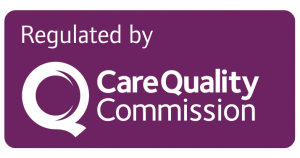Private Aorta
Utrasound scans of the Aorta might be advisable to exclude or diagnose the presence of an Aortic Aneurysm or to monitor the state of a known Aortic Aneurysm
The highly experienced Sonographers working with Beehive Solutions provide a Private (fee paying) Ultrasound service for those persons requiring aortic scans.
What is an Abdominal Aortic Aneurysm?
An Abdominal Aortic Aneurysm is when the major blood vessel from the heart, the ‘Aorta’, that supplies blood to the abdomen, pelvis, and legs, becomes abnormally large or balloons outward.
More specifically an Abdominal Aortic Aneurysm is a localized dilatation (ballooning) of the abdominal aorta exceeding the normal diameter by more than 50%, and is the most common form of aortic aneurysm. Approximately 90% of abdominal aortic aneurysms occur infra-renally (below the level of the kidneys), but they can also occur para-renally (at the level of the kidneys) or supra-renally (above the kidneys). Such aneurysms can extend to include one or both of the iliac arteries in the pelvis.
The exact cause is unknown, but risk factors for developing an abdominal aortic aneurysm include:
- Emphysema
- Genetic factors
- High blood pressure
- High cholesterol
- Male gender
- Obesity
- Smoking
An abdominal aortic aneurysm can develop in anyone, but is most often seen in males over age 60 who have one or more risk factors. The larger the aneurysm, the more likely it is to rupture and break open.
Abdominal Aortic Aneurysms generally develop slowly over many years and often have no symptoms, although occasionally the Aneurysm may expand quickly, it may tear open or blood may leak along the wall of the vessel (aortic dissection) in which case it may be associated with pain in the abdomen and back (due to pressure on surrounding tissues) or in the legs (due to disturbed blood flow).
Additonal symptoms may include:
- Clammy skin
- Dizziness
- Nausea and vomiting
- Rapid heart rate
- Shock
When present, signs can include
- A lump (mass) in the abdomen
- Pulsating sensation in the abdomen
- Stiff or rigid abdomen
A Rupture is the major complication of abdominal aortic aneurysms, which is a life-threatening condition; as large amounts of blood spill into the abdominal cavity, and can lead to death literally within minutes. If you have bleeding inside your body from an aortic aneurysm, open abdominal aortic aneurysm repair is the only option, and even then the prognosis is poor .
If the aneurysm is small and there are no symptoms, surgery is rarely performed as the risk of having surgery may be greater than the risk of bleeding at a later date. In such cases it is advisable to have regular monitoring of the Abdominal Aortic Aneurysm to check for signs of enlargement.
Surgery is usually recommended for patients who have aneurysms bigger than 2 inches (5.5 cm) across and aneurysms that are growing quickly. The goal is to perform surgery before complications or symptoms develop.
There are two approaches to surgery:
- In a traditional “(open) repair”, a large cut is made in the abdomen. The abnormal vessel is replaced with a graft made of man-made material, such as Dacron.
- The other approach is called “endovascular stent grafting”. This procedure can be done without making a large cut in your abdomen, so you may get well faster. If you have certain other medical problems, this may be a safer approach. Endovascular repair is rarely done for a leaking or bleeding aneurysm.
What preparation is required for an Abdominal Aorta Ultrasound scan?
In general, no preparation is required for an ultrasound of your Aorta, although fizzy drinks should be avoided for 6 hours prior to the examination as bowel gas causes serious issues in getting good visualisation of deep structures, such as the Aorta.
What will happen during the examination?
The procedure is non-invasive and painless. You will be asked to lie on your back on the examination couch and expose your abdomen. Our highly qualified and experienced Sonographer will move a transducer lubricated with warm gel over your abdomen to obtain the necessary images. You are welcome to ask questions during your examination. You may bring someone into the examination room with you if you wish (no children please), and a HealthCare Assistant will also be on hand should you require support or a chaperone.
Will I be given a record of the Ultrasound examination?
Following your scan, we shall provide you with an Examination Report, together with a memory stick or CD containing selecting images and possibly video recordings of the scan. The images can be printed off or saved on a home pc. We do not offer thermal prints of the examination as these are invariably of low quality and will degrade over time. By providing digital images, you can print off as many copies as you like, save them for posterity in digital format and send copies to any future medical professional.
What is the cost of a Private Abdominal Aorta Ultrasound Scan?
Full pricing details are available on the Private-Ultrasound page of this website, or you can download a copy of our current charges schedule.
Please call us on 020 8550 9108 to discuss the best rate per examination.
Return to full details of our Private (fee Paying) Ultrasound service.


